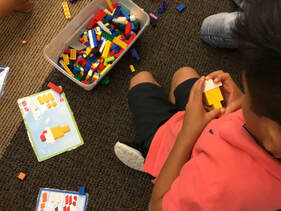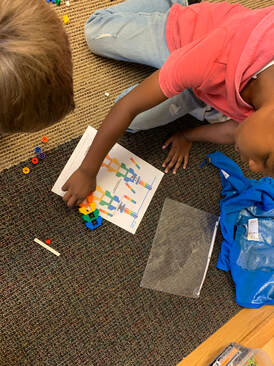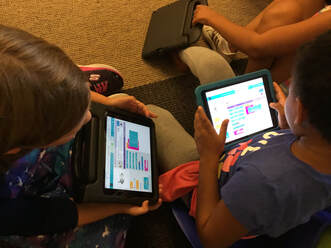|
Our focus at the beginning of this year has been on comparing and contrasting. It is important that students take time to think about different ways of thinking and accept those ways of thinking whether they think they are good or not. Across all of my classes we have been utilizing this strategy in many different ways. First grade took time to listen to a story, What Do You Do With An Idea, by Kobi Yamada, and compare how the illustrations in the story by Mae Besom change from the beginning to the end. It was interesting listening to their ideas on what those changes represent. For the past 2 weeks we have been busy in using this idea as we began to look at Computer Science standards 1B-AP-08 for grades 3-5 focusing on comparing and refining multiple algorithms to perform the same task. While my older students work on this in the literal sense in Code.org as we started this year, my younger students did some STEM Engineering activities that had them compare what they were creating and then evaluating their build with what another model looked like. This begins to make a connection to the Next Generation Science Standards Engineering and Design K-2 and looking at models and how they are designed.  In K-1 this week my students worked on looking at and comparing a pictured model and replicating that either exactely from the card or making it in their own way with a variety of other Lego Bricks.  In 2nd grade, we are beginning to use our Lego Learn2Learn sets to recreate a model they worked on the year before, but now taking it to the next level and using it to create a Stop-Motion Animation story. Stay tuned for that! Without having a set of specific directions, they used their parts, created by reading a front view and a rear view and then compared their model to see if it was made correctly.  3rd through 5th grade has now begun their work in Code.org and learning how to look at algorithms and then troubleshoot problems. After students couldn't figure out a puzzle, they were told to compare their code with a classmate. They were then asked, "Did it work?", and "How come your code and her code both solved the same puzzle when they are different?" This gave a good opportunity to for students to reflect back on their goal. It also gave an opportunity to see that there are many ways to solve problems.
1 Comment
|
AuthorElementary Encore teacher, teaching STEM and Computer Science. I am an advocate for STEM education and computational thinking by the means of Computer Science, Coding and Technology skills. Archives
January 2020
Categories |
 RSS Feed
RSS Feed
